An obligate mutualistic relationship exists between the fungus Amylostereum areolatum and woodwasp Sirex noctilio. The fungus digests lignin within the host pine, offering important vitamins for the rising woodwasp larvae. Nonetheless, the useful properties of this symbiosis are poorly described. On this research, we recognized, cloned, and characterised 14 laccase genes from A. areolatum. These genes encoded proteins of 508 to 529 amino acids and contained three typical copper-oxidase domains, essential to confer laccase exercise. Apart from, we carried out molecular docking and dynamics simulation of the laccase proteins in advanced with lignin compounds (monomers, dimers, trimers, and tetramers).
AaLac2, AaLac3, AaLac6, AaLac8, and AaLac10 have been discovered that had low binding energies with all lignin mannequin compounds examined and three of them might keep stability when binding to those compounds. Amongst these complexes, amino acid residues ALA, GLN, LEU, PHE, PRO, and SER have been generally current. Our research reveals the molecular foundation of A. areolatum laccases interacting with lignin, which is crucial for understanding how the fungus offers vitamins to S. noctilio. These findings may additionally present steering for the management of S. noctilio by informing the design of enzyme mutants that would scale back the effectivity of lignin degradation.
One of many structural genes recognized, bzfC, expresses the enzyme (BzfC) being able to rework vanillin and syringaldehyde to corresponding acids, indicating that BzfC is a multifunctional enzyme that initiates oxidization of LLCs in pressure LLC-1. Benzoylformic acid is a catabolic intermediate of (R,S)-mandelic acid in P. putida. Pressure LLC-1 didn’t possess the genes for mandelic acid racemization and oxidation, suggesting that the operate of benzoylformic acid catabolic enzymes is completely different from that in P. putida. Genome-wide characterization recognized the bzf gene chargeable for benzoylformate and vanillin catabolism in pressure LLC-1, exhibiting a novel mode of dissimilation for biomass-derived fragrant compounds by this pressure.
Molecular and evolutionary processes generanking variation in gene expression
Heritable variation in gene expression is frequent inside and between species. This variation arises from mutations that alter the shape or operate of molecular gene regulatory networks which might be then filtered by pure choice. Excessive-throughput strategies for introducing mutations and characterizing their cis- and trans-regulatory results on gene expression (significantly, transcription) are revealing how completely different molecular mechanisms generate regulatory variation, and research evaluating these mutational results with variation seen within the wild are teasing aside the function of impartial and non-neutral evolutionary processes. This integration of molecular and evolutionary biology permits us to know how the variation in gene expression we see at the moment got here to be and to foretell how it’s most definitely to evolve sooner or later.
The gaseous hormone ethylene regulates a various vary of plant improvement and stress responses. Ethylene biosynthesis is tightly regulated by the transcriptional and posttranscriptional regulation of ethylene biosynthetic enzymes. ACC synthase (ACS) is the rate-limiting enzyme that controls the pace of ethylene biosynthesis in plant tissues, thus serving as a major goal for biotic and abiotic stresses to modulate ethylene manufacturing. Regardless of the crucial function of ACS in ethylene biosynthesis, only some regulatory parts regulating ACS stability or ACS transcript ranges have been recognized and characterised. Right here we present a genetic strategy for figuring out novel regulatory parts in ethylene biosynthesis by screening EMS-mutagenized Arabidopsis seeds.

Genes Identification, Molecular Docking and Dynamics Simulation Analysis of Laccases from Amylostereum areolatum Provides Molecular Basis of Laccase Bound to Lignin
Molecular characterisation, tissue distribution, and expression profiling of the cathepsin b gene throughout ovarian follicle improvement in geese
Though there may be proof that Cathepsin B (CTSB) regulates the degradation and absorption of yolk precursors throughout avian ovarian follicle improvement, nothing is understood about its molecular traits, tissue distribution or expression profiles in goose ovarian follicular compartments. The intact 1023 bp coding sequence of the goose CTSB gene was obtained for the primary time. It encoded a polypeptide of 340 amino acids (AA) containing two conserved useful domains (i.e., Propeptide_C1 and Peptidase_C1A_Cathpsin B) and three energetic amino acid residues (+108, +279, and +299). Each the nucleotide and AA sequences of goose CTSB gene confirmed greater than 90% similarity with its respective homologs from different avian species.
) Magnesium acetate - Tetrahydrate (Molecular Biology Grade) |
|
CE190 |
GeneOn |
500 g |
EUR 98.4 |
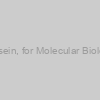 Casein, for Molecular Biology |
|
MB279-100G |
EWC Diagnostics |
1 unit |
EUR 110.77 |
|
Description: Casein, for Molecular Biology |
 Casein, for Molecular Biology |
|
MB279-500G |
EWC Diagnostics |
1 unit |
EUR 387.65 |
|
Description: Casein, for Molecular Biology |
) NADPH - Tetrasodium salt (Molecular Biology Grade) |
|
CE202 |
GeneOn |
25 mg |
EUR 70.8 |
) NADPH - Tetrasodium salt (Molecular Biology Grade) |
|
CE203 |
GeneOn |
100 mg |
EUR 126 |
) NADPH - Tetrasodium salt (Molecular Biology Grade) |
|
CE204 |
GeneOn |
500 mg |
EUR 374.4 |
) Tetrahydrofuran (THF) |
|
TC8900 |
Bio Basic |
1L |
EUR 103.85 |
|
|
 2-Mercaptoethanol ?For Molecular Biology |
|
MB041-100ML |
EWC Diagnostics |
1 unit |
EUR 9.02 |
|
Description: 2-Mercaptoethanol ?For Molecular Biology |
 2-Mercaptoethanol ?For Molecular Biology |
|
MB041-500ML |
EWC Diagnostics |
1 unit |
EUR 26.47 |
|
Description: 2-Mercaptoethanol ?For Molecular Biology |
 Molecular Biology Grade Water for RT-PCR |
|
ML065-1.5ML |
EWC Diagnostics |
1 unit |
EUR 7.82 |
|
Description: Molecular Biology Grade Water for RT-PCR |
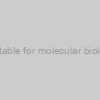 Pyridine, GlenBiol™, suitable for molecular biology with molecular sieve |
|
GS8780-2500 |
Glentham Life Sciences |
2500 |
EUR 249.8 |
|
|
) DTT (Molecular Biology Grade) |
|
CE131 |
GeneOn |
5 g |
EUR 93.6 |
) DTT (Molecular Biology Grade) |
|
CE132 |
GeneOn |
10 g |
EUR 133.2 |
) DTT (Molecular Biology Grade) |
|
CE133 |
GeneOn |
25 g |
EUR 243.6 |
) NAD (Molecular Biology Grade) |
|
CE196 |
GeneOn |
1 g |
EUR 72 |
) NAD (Molecular Biology Grade) |
|
CE197 |
GeneOn |
5 g |
EUR 165.6 |
) NBT (Molecular Biology Grade) |
|
CE209 |
GeneOn |
1 g |
EUR 123.6 |
) NBT (Molecular Biology Grade) |
|
CE210 |
GeneOn |
5 g |
EUR 360 |
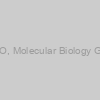 DMSO, Molecular Biology Grade |
|
40470006-1 |
Glycomatrix |
100 mL |
EUR 88.18 |
 DMSO, Molecular Biology Grade |
|
40470006-2 |
Glycomatrix |
250 mL |
EUR 150.19 |
 DMSO, Molecular Biology Grade |
|
40470006-3 |
Glycomatrix |
500 mL |
EUR 279.26 |
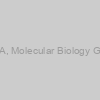 EGTA, Molecular Biology Grade |
|
40500028-2 |
Glycomatrix |
50 g |
EUR 106.43 |
 EGTA, Molecular Biology Grade |
|
40500028-3 |
Glycomatrix |
100 g |
EUR 177.58 |
 EGTA, Molecular Biology Grade |
|
40500028-4 |
Glycomatrix |
500 g |
EUR 603.19 |
 EGTA, Molecular Biology Grade |
|
40500028-5 |
Glycomatrix |
1 kg |
EUR 912.98 |
 EGTA, Molecular Biology Grade |
|
40500028-6 |
Glycomatrix |
2 kg |
EUR 1687.94 |
) BCIP (Molecular Biology Grade) |
|
CE108 |
GeneOn |
250 mg |
EUR 75.6 |
) BCIP (Molecular Biology Grade) |
|
CE109 |
GeneOn |
1 g |
EUR 108 |
) DAPI (Molecular Biology Grade) |
|
CE117 |
GeneOn |
5 mg |
EUR 72 |
) DAPI (Molecular Biology Grade) |
|
CE118 |
GeneOn |
25 mg |
EUR 159.6 |
) DAPI (Molecular Biology Grade) |
|
CE119 |
GeneOn |
100 mg |
EUR 382.8 |
) Tris (Molecular Biology Grade) |
|
CE237 |
GeneOn |
500 g |
EUR 106.8 |
) Tris (Molecular Biology Grade) |
|
CE238 |
GeneOn |
1 kg |
EUR 153.6 |
) Tris (Molecular Biology Grade) |
|
CE239 |
GeneOn |
5 kg |
EUR 535.2 |
 2-Aminomethyl tetrahydrofuran 97% |
|
A24940 |
Pfaltz & Bauer |
25G |
EUR 129.43 |
) CHAPS (Molecular Biology Grade) |
|
CE114 |
GeneOn |
1 g |
EUR 66 |
) CHAPS (Molecular Biology Grade) |
|
CE115 |
GeneOn |
5 g |
EUR 157.2 |
) CHAPS (Molecular Biology Grade) |
|
CE116 |
GeneOn |
25 g |
EUR 492 |
) HEPES (Molecular Biology Grade) |
|
CE171 |
GeneOn |
100 g |
EUR 98.4 |
) HEPES (Molecular Biology Grade) |
|
CE172 |
GeneOn |
500 g |
EUR 268.8 |
) HEPES (Molecular Biology Grade) |
|
CE173 |
GeneOn |
1 kg |
EUR 424.8 |
) Water (Molecular Biology Grade) |
|
CE243 |
GeneOn |
500 ml |
EUR 62.4 |
) Water (Molecular Biology Grade) |
|
CE244 |
GeneOn |
1 l |
EUR 67.2 |
 Molecular Biology Grade Water |
|
ML024-100ML |
EWC Diagnostics |
1 unit |
EUR 3.54 |
|
Description: Molecular Biology Grade Water |
 Molecular Biology Grade Water |
|
ML024-10X100ML |
EWC Diagnostics |
1 unit |
EUR 29.52 |
|
Description: Molecular Biology Grade Water |
 Molecular Biology Grade Water |
|
ML024-10X500ML |
EWC Diagnostics |
1 unit |
EUR 87.91 |
|
Description: Molecular Biology Grade Water |
 Molecular Biology Grade Water |
|
ML024-500ML |
EWC Diagnostics |
1 unit |
EUR 12.56 |
|
Description: Molecular Biology Grade Water |
 Molecular Biology Grade Water |
|
ML064-100ML |
EWC Diagnostics |
1 unit |
EUR 3.67 |
|
Description: Molecular Biology Grade Water |
 Molecular Biology Grade Water |
|
ML064-10X100ML |
EWC Diagnostics |
1 unit |
EUR 25.38 |
|
Description: Molecular Biology Grade Water |
 Molecular Biology Grade Water |
|
ML064-500ML |
EWC Diagnostics |
1 unit |
EUR 10.81 |
|
Description: Molecular Biology Grade Water |
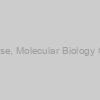 Agarose, Molecular Biology Grade |
|
40100164-1 |
Bio-WORLD |
25 g |
Ask for price |
|
|
 Agarose, Molecular Biology Grade |
|
40100164-2 |
Bio-WORLD |
50 g |
Ask for price |
|
|
 Agarose, Molecular Biology Grade |
|
40100164-3 |
Bio-WORLD |
100 g |
Ask for price |
|
|
 Agarose, Molecular Biology Grade |
|
40100164-4 |
Bio-WORLD |
500 g |
Ask for price |
|
|
 Agarose, Molecular Biology Grade |
|
40100164-5 |
Bio-WORLD |
1 kg |
Ask for price |
|
|
) Glycine (Molecular Biology Grade) |
|
CE158 |
GeneOn |
1 kg |
EUR 84 |
) Glycine (Molecular Biology Grade) |
|
CE159 |
GeneOn |
5 kg |
EUR 228 |
) Tween20 (Molecular Biology Grade) |
|
CE242 |
GeneOn |
1 l |
EUR 106.8 |
) Agarose (Molecular Biology Grade) |
|
abx299715-100g |
Abbexa |
100 µg |
Ask for price |
) Agarose (Molecular Biology Grade) |
|
abx299715-20g |
Abbexa |
20 µg |
EUR 525 |
) Agarose (Molecular Biology Grade) |
|
abx299715-50g |
Abbexa |
50 µg |
Ask for price |
) Lysozyme (Molecular Biology Grade) |
|
CE188 |
GeneOn |
1 g |
EUR 70.8 |
) Lysozyme (Molecular Biology Grade) |
|
CE189 |
GeneOn |
10 g |
EUR 247.2 |
) Lysozyme (Molecular Biology Grade) |
|
CE189L |
GeneOn |
50 g |
EUR 310 |
) Lysozyme (Molecular Biology Grade) |
|
CE189XL |
GeneOn |
250 g |
EUR 1050 |
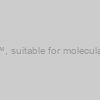 Dimethylformamide, GlenBiol™, suitable for molecular biology with molecular sieve |
|
GS3406-2500 |
Glentham Life Sciences |
2500 |
EUR 116.2 |
|
|
 "10X PBS, Molecular Biology Grade" |
|
ML023-100ML |
EWC Diagnostics |
1 unit |
EUR 17.65 |
|
Description: "10X PBS, Molecular Biology Grade" |
The qRT-PCR outcomes confirmed that CTSB mRNA was ubiquitously expressed in all examined goose tissues, with average to excessive ranges within the reproductive organs together with the ovarian stroma and oviduct. Expression of goose CTSB mRNA within the granulosa layers elevated steadily from the 2-Four mm F5 follicles however declined to comparatively low ranges within the F4-F1 follicles, whereas remaining statistically unchanged within the theca layers all through follicle improvement. Excessive sequence similarity of goose CTSB gene to different avian species advised useful conservation of avian CTSB genes, and its fluctuating ranges within the granulosa layers could also be related to the orderly development of goose follicle improvement. These knowledge laid a basis for additional elucidating the function of CTSB within the avian ovary.
Tags:
equipments mtg,
equipments needed in building an aquarium,
equipmentshare careers,
equipmentshare ceo,
equipmentshare controller,
equipmentshare hr,
equipmentshare kc,
equipmentshare us,
equipmentshare website,
exosomes 5g,
exosomes and chf,
exosomes and coronavirus,
exosomes and ed,
exosomes and ms,
exosomes and ra,
exosomes and viruses,
exosomes are virus,
exosomes dr kaufman,
exosomes for delivery,
exosomes for hair,
exosomes for hair loss,
exosomes msc,
exosomes nj,
exosomes tem,
exosomes therapy,
exosomes treatment,
gels iga,
gels iga st henry ohio,
gels kitchen,
gelsemium,
gelsemium homeopathic,
gelsemium sempervirens,
gelsenkirchen,
gelsey kirkland,
gelsey kirkland 2020,
gelsolin,
gelson’s instacart,
gelson’s market,
gelson’s rancho mirage,
gelson’s thousand oaks,
gelson’s weekly flyer,
gelsosomo’s crown point,
gelsosomo’s pizza,
gelsosomo’s pizza chesterton,
gelston house east haddam ct,
gelstx,
gelsyn injection,
gelsyn-3,
gelsyn-3 injection,
isotopes and ions,
isotopes baseball,
isotopes baseball abq,
isotopes definition,
isotopes examples,
isotopes of argon,
isotopes of copper,
isotopes of hydrogen,
isotopes of lead,
isotopes of nitrogen,
isotopes of oxygen,
isotopes of oxygen-16,
isotopes of rhenium,
isotopes of sulfur

